*Update – World War II veteran, Battleship New Jersey volunteer and former fireman Russ Collins has since passed away
Photography by David Michael Howarth • Shot on location aboard Battleship New Jersey
Decades have passed since Battleship New Jersey has seen action or its 57,000 tons of steel have cruised the open sea. The gigantic ship once carried legions of men through battle zones and peaceful waters, from World War II through service in the Persian Gulf in the 1990s. The most decorated battleship in U.S. Navy history, she now stoically stands guard at the Camden waterfront. Many of the men who served on the New Jersey fondly remember their time aboard her massive decks, and they’re still working to make sure her legacy lives on.
 Russ Collins
Russ Collins
First Class Fireman, 1943-1946
If there’s one thing Russ Collins remembers about Battleship New Jersey’s engine room No. 1, it’s that it was hot.
“I’d say it was probably around 130 degrees at all times,” says Collins. “You had to be in full-dress, and you had to have your shirt-sleeves down and have a hat on in case there was a break in the pipe. If the steam pipe ever broke, you wouldn’t get out of there anyhow – it would burn you to death.”
When he was just 17 years old, Collins was called to serve aboard the then-brand-new Battleship New Jersey during World War II. The young Camden native had spent time toiling in the shipyard, but his time aboard New Jersey was unlike anything he’d ever experienced.
He vividly recalls witnessing The Battle of the Philippine Sea, a major naval battle that took place during the U.S. invasion of the Mariana Islands.
“That was the biggest air battle in the Pacific,” says Collins, of the aerial battle that was later nicknamed “the 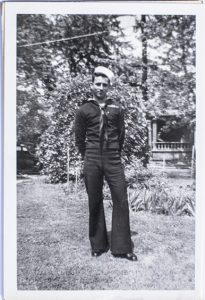 Great Marianas Turkey Shoot” because of the severe loss inflicted on the Japanese aircrafts by U.S. troops.
Great Marianas Turkey Shoot” because of the severe loss inflicted on the Japanese aircrafts by U.S. troops.
“At one point, a voice over the loudspeaker came on and told them to stop firing their weapons, because we were shooting at planes overhead and we didn’t know who they were because they were up so high,” he recalls. “Planes were all over the place, all day. That was their last stand – it was do or die. That was it.”
Seven decades later, Collins is still thankful that he and his crewmates were the lucky ones and were honored for their service with the World War II Victory Medal.
“No one got killed during World War II on the ship. We couldn’t ask for anything more than that.”
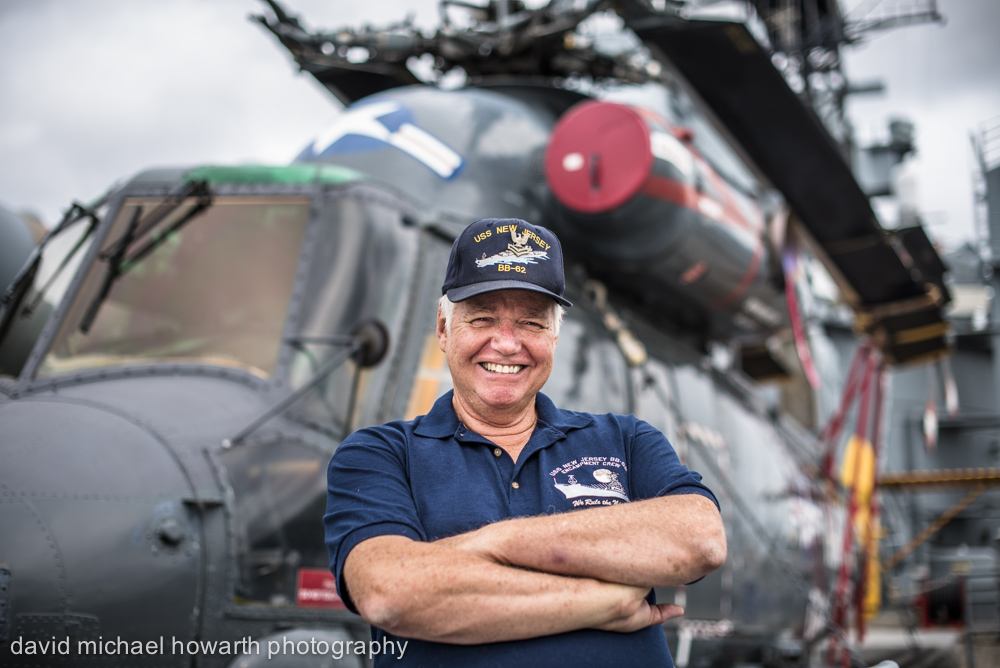
Ken Kersch
Machinery Repairman, 1967-1969
Ken Kersch should have been at his sister’s wedding, but war waits for no man.
Stationed aboard Battleship New Jersey during Vietnam, Kersch was supposed to be sent to an aircraft that was docking a day earlier so he could make it back to the United States in time for the nuptials. That was, until the ship had to turn around.
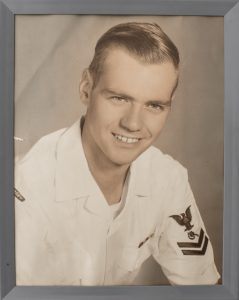 “The North Koreans shot down one of our aircrafts, and the New Jersey was ordered back to stand off the coast of Korea for several weeks,” he says. “I never made it home to my sister’s wedding, and there was no way we could call or tell anybody about it.”
“The North Koreans shot down one of our aircrafts, and the New Jersey was ordered back to stand off the coast of Korea for several weeks,” he says. “I never made it home to my sister’s wedding, and there was no way we could call or tell anybody about it.”
Kersch was assigned to the recommissioned battleship in 1967, while it was still stationed at the Philadelphia Naval Shipyard. He was on board on May 16 during that fateful year when the New Jersey, then the world’s only active battleship, departed for Vietnam.
“For the time you’re on that ship, it’s your job, it’s your protector, it’s your house. The guys are your family,” he says. “It’s a bond that people who have never been in the military will never understand.”
As a machinery repairman, Kersch was tasked with fixing broken weaponry – much of it from World War II – whether he had blueprints or not. The job took him all over the ship, including to highly classified areas like the cryptography room where enemy messages were decoded.
Though Kersch served aboard the battleship during the war, he can recall fun moments at sea, like eating dinner with movie star Ann-Margret and her husband Roger Smith, and the time the ship’s captain built two swimming pools from old gun tubes.
“I was fortunate enough to be on a ship like that. Having been in Vietnam, it was the best place you could be. I had it good compared to some guys over there,” Kersch adds. “I had a bed to sleep in, I didn’t sleep in the jungle. I had three meals a day. Some of the troops there didn’t get that.”
George MacCulloch
Third-Class Petty Officer & Third-Class Gunner’s Mate, 1955
George MacCulloch still remembers riding out a bad storm aboard Battleship New Jersey.
“I looked out onto the fleet to see the ships bobbing up and down in the waves,” he says. “The New Jersey barely even shook.”
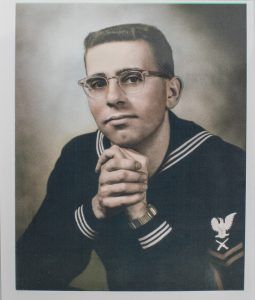 It was 1955, and MacCulloch had just joined the Navy fresh out of high school and was aboard the New Jersey for midshipman training in Annapolis.
It was 1955, and MacCulloch had just joined the Navy fresh out of high school and was aboard the New Jersey for midshipman training in Annapolis.
“To be on the most famous ship in the Navy was kind of stunning. In the time we were allotted, we hardly had a chance to really get used to it – it’s so massive,” he says.
Though the Korean War had ended by the time MacCulloch first set foot on the New Jersey, the crew still worked to keep the vessel – which served two tours of duty in Korean waters – poised and ready for action.
“It was not much different than it was during wartime. The only thing is, we weren’t trying to further a cause other than to maintain a ship and maintain the accuracy of the weapons,” he says. “That was really the No. 1 importance with the whole crew, as I could see it. Keeping the ship ready for whatever it was needed for, whenever it was needed.”
Nearly 50 years after he served aboard the battleship, MacCulloch was there to watch the New Jersey be towed down the Delaware River to her final berth in Camden.
“Everyone was working on the ship for the good of the ship and to make this the most famous ship of the Navy.”
Jerry “Gus” Augustin
Captain’s Orderly, 1956-1957
Jerry Augustin was a fresh-faced 18-year-old when he was put in charge of the military prison aboard Battleship New Jersey.
Augustin, who was given his nickname “Gus” by his fellow crewmates, was assigned the duty of overseeing the “brig,” where rowdy sailors were sent to sit out their punishments in small cells fitted with only mattresses.
“It wasn’t like people were using it all the time, but from time to time guys would get in trouble and they’d end up in the brig,” he says.
Augustin recalls that the men sent down to the brig would be given enough bread and water for three days. “Some would gobble it up at once, while others would stretch out their rations. By the time they were released, they made a beeline to the mess decks to get something to eat. I don’t remember a repeater.”
Augustin went on to become a captain’s orderly, a position that’s essentially a bodyguard for the ship’s captain. This meant he served as an intermediary between the captain and those who wanted to talk to him – Augustin recalls he once had a high-ranking Naval official without proper ID yell at him for denying access to the captain.
“I had to get to know all the officers on the ship – who they were, where they worked and who their buddies were,” he says. “I had to stay right by the captain’s side at all times, because I was there to protect him.”
Augustin also had to stand guard outside the captain’s cabin. “Someone had to keep an eye on the silver – millions of dollars worth of Tiffany silver was stored in that cabin – and make sure no one came in,” he says. “Part of our job was to make sure someone was there at all times and that it was never empty.”
 Walter Urban
Walter Urban
Captain, U.S. Navy Reserves Public Affairs Officer, 1985-1991
Growing up in Philadelphia during the 1950s, Walt Urban loved watching the WWII TV series “Victory at Sea.”
The young boy from Philadelphia never dreamed that the Battleship New Jersey would ever set sail again – or that one day he would be on board when it did.
Urban was serving in the military as an Army Reserve Captain when his career took a twist and he was assigned to the ship after it was recommissioned for the third time.
“Reporting on board for the first time in February 1985, I felt like I had achieved something I thought I would never do as a young boy,” he says. “I was in the right spot, at the right time, to get on board and serve. To me that was like a dream come true. I can’t believe I had the good fortune to experience something I never thought would happen.”
Urban came aboard the New Jersey in Long Beach, Calif., where the Navy was holding drills and gunnery exercises on the ship before deploying to assist with the Lebanese Civil War. After three weeks of working in the public affairs office, Urban impressed his superiors, and one captain suggested he apply for an inter-service change to become a Naval officer.
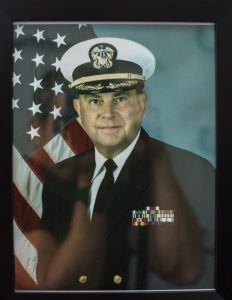 “I was notified I was selected to become a Navy Public Affairs Officer and subsequently, got promoted to Major,” he says. “So I started my Navy career as a Lieutenant Commander after completing about 15 years in the Army and Army Reserves.”
“I was notified I was selected to become a Navy Public Affairs Officer and subsequently, got promoted to Major,” he says. “So I started my Navy career as a Lieutenant Commander after completing about 15 years in the Army and Army Reserves.”
Urban would go on to see the battleship he adored as a kid be decommissioned in 1991.
“Obviously, hellos are much more enjoyable than goodbyes,” he says, recalling the crew marching off the New Jersey for the final time. “It was a very emotional moment to me.”
These days, Urban serves in Battleship New Jersey’s military liaison office and as chairman of the board of trustees, where he works to educate others about its history.
“Her legacy is embedded in Naval history and always will be,” he says. “I’m very proud to be a part of the team who keeps that legacy alive.”


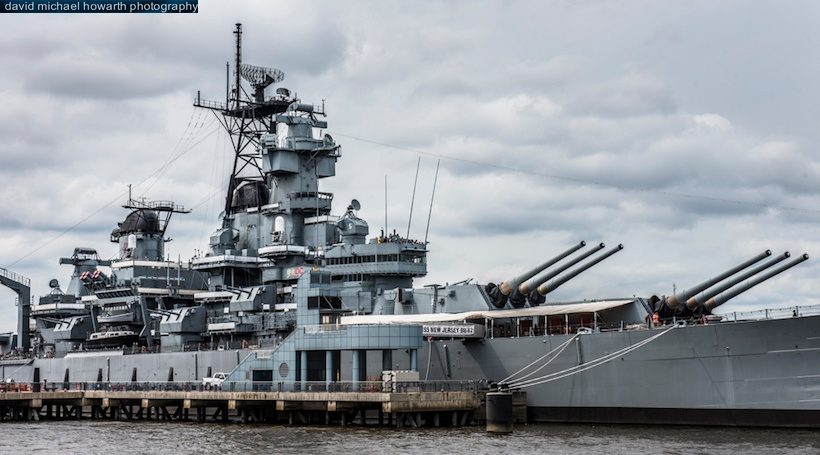
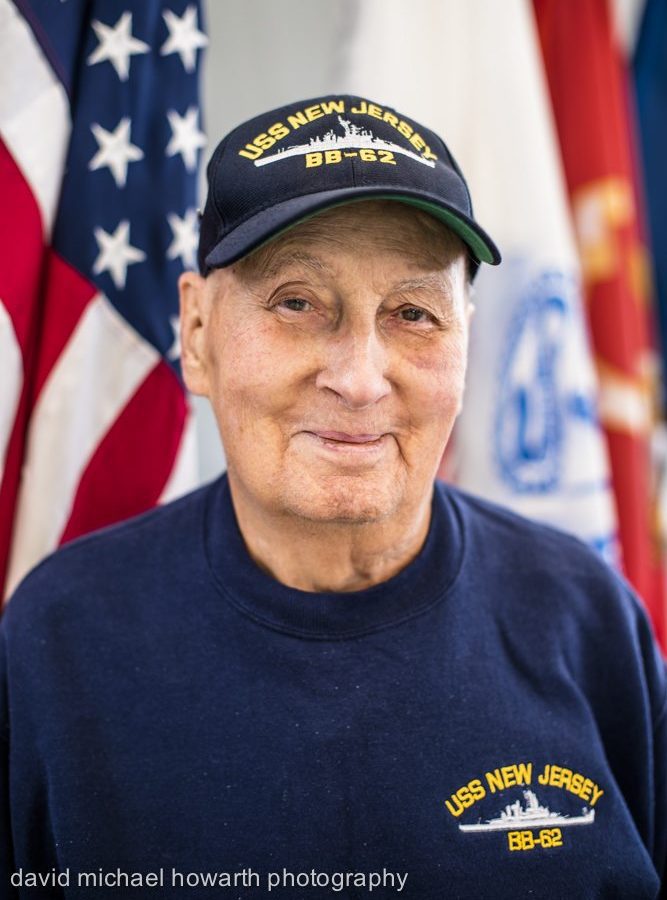 Russ Collins
Russ Collins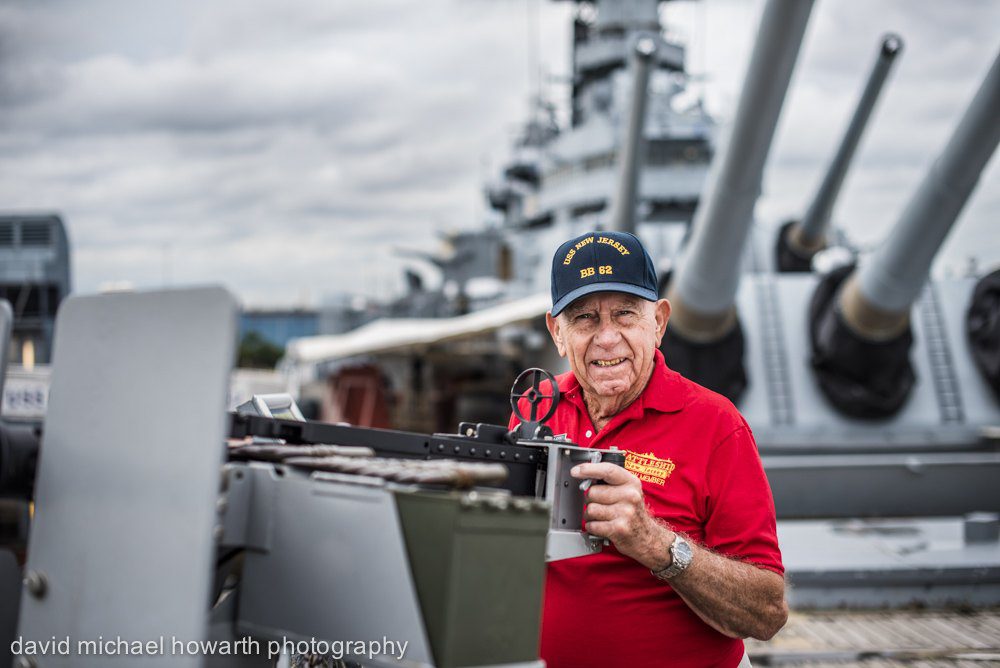
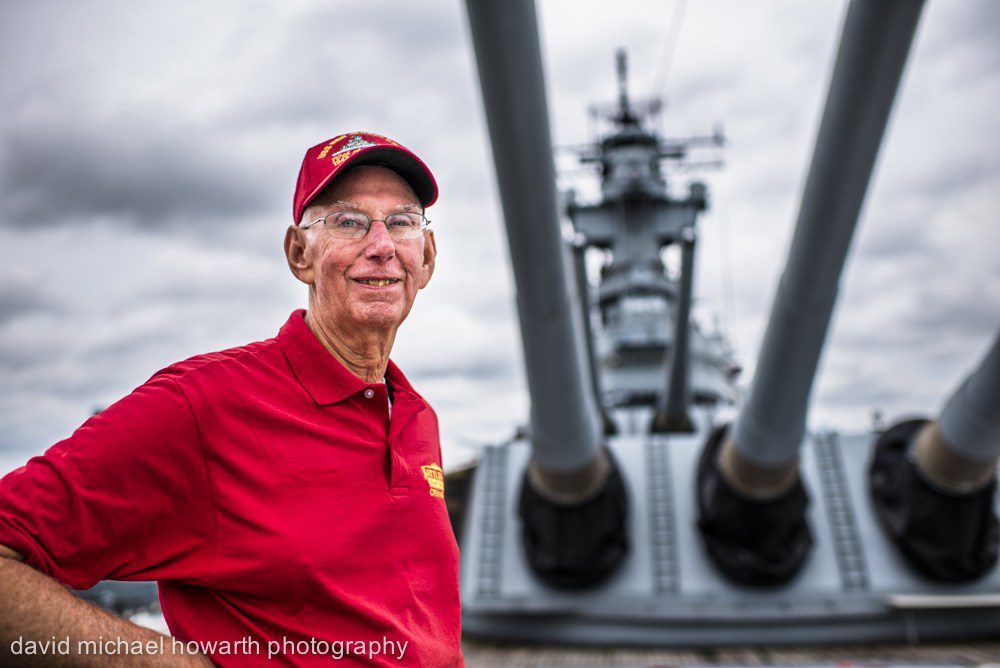
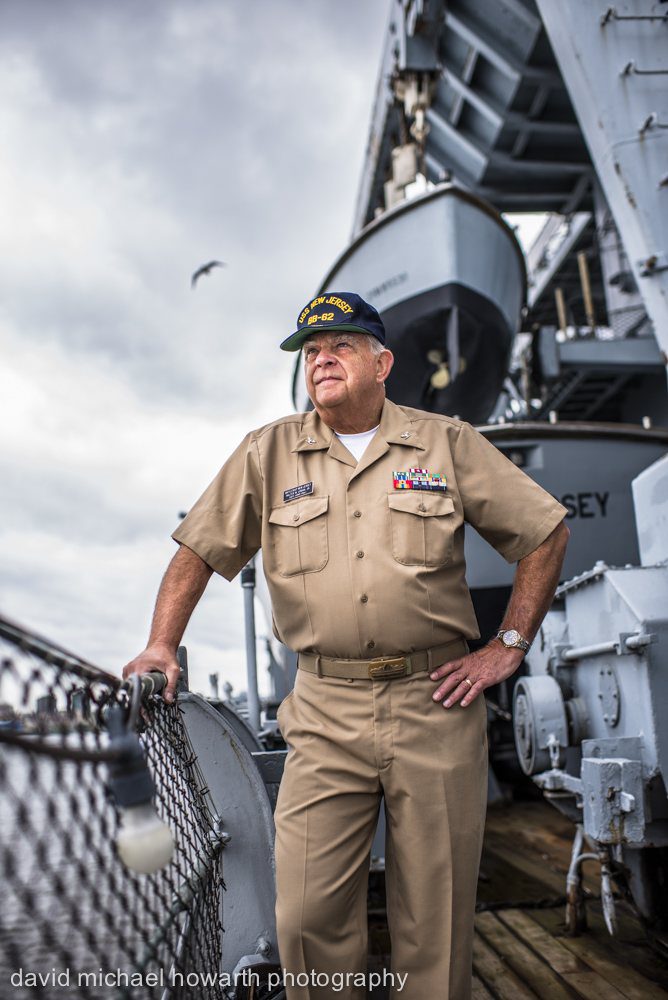 Walter Urban
Walter Urban










